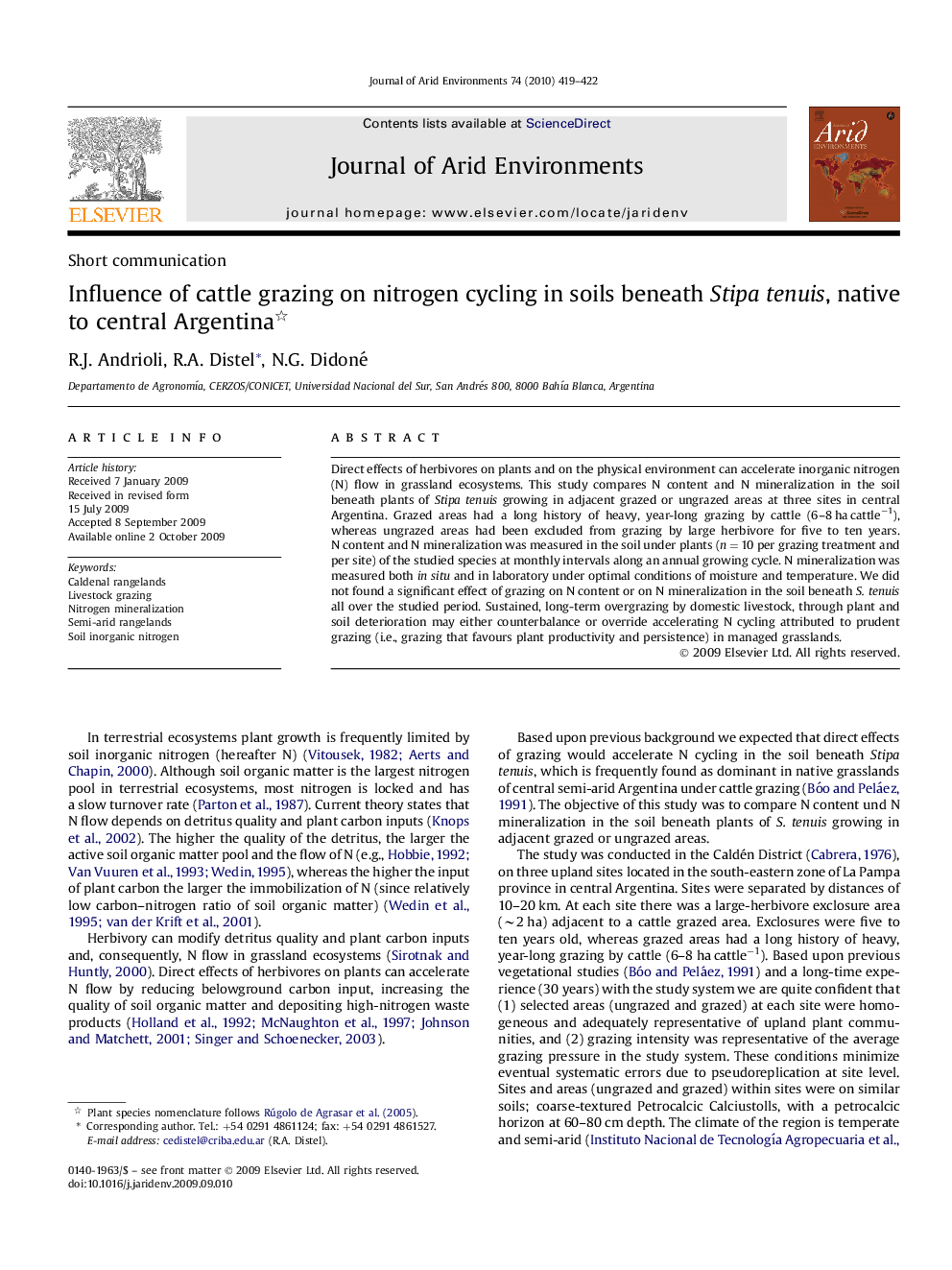| Article ID | Journal | Published Year | Pages | File Type |
|---|---|---|---|---|
| 4393829 | Journal of Arid Environments | 2010 | 4 Pages |
Direct effects of herbivores on plants and on the physical environment can accelerate inorganic nitrogen (N) flow in grassland ecosystems. This study compares N content and N mineralization in the soil beneath plants of Stipa tenuis growing in adjacent grazed or ungrazed areas at three sites in central Argentina. Grazed areas had a long history of heavy, year-long grazing by cattle (6–8 ha cattle−1), whereas ungrazed areas had been excluded from grazing by large herbivore for five to ten years. N content and N mineralization was measured in the soil under plants (n = 10 per grazing treatment and per site) of the studied species at monthly intervals along an annual growing cycle. N mineralization was measured both in situ and in laboratory under optimal conditions of moisture and temperature. We did not found a significant effect of grazing on N content or on N mineralization in the soil beneath S. tenuis all over the studied period. Sustained, long-term overgrazing by domestic livestock, through plant and soil deterioration may either counterbalance or override accelerating N cycling attributed to prudent grazing (i.e., grazing that favours plant productivity and persistence) in managed grasslands.
